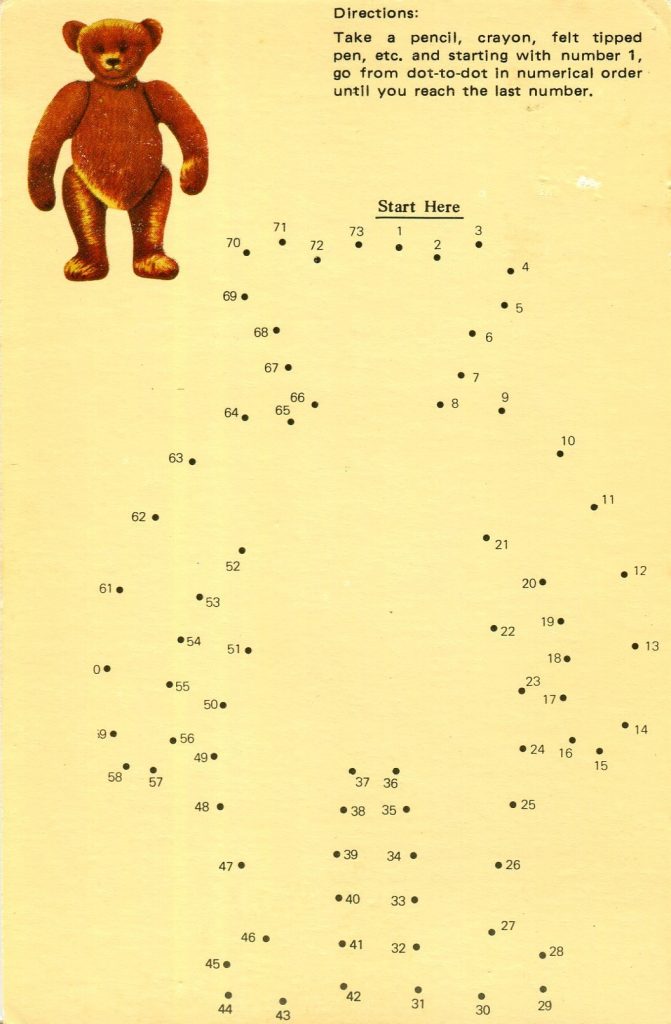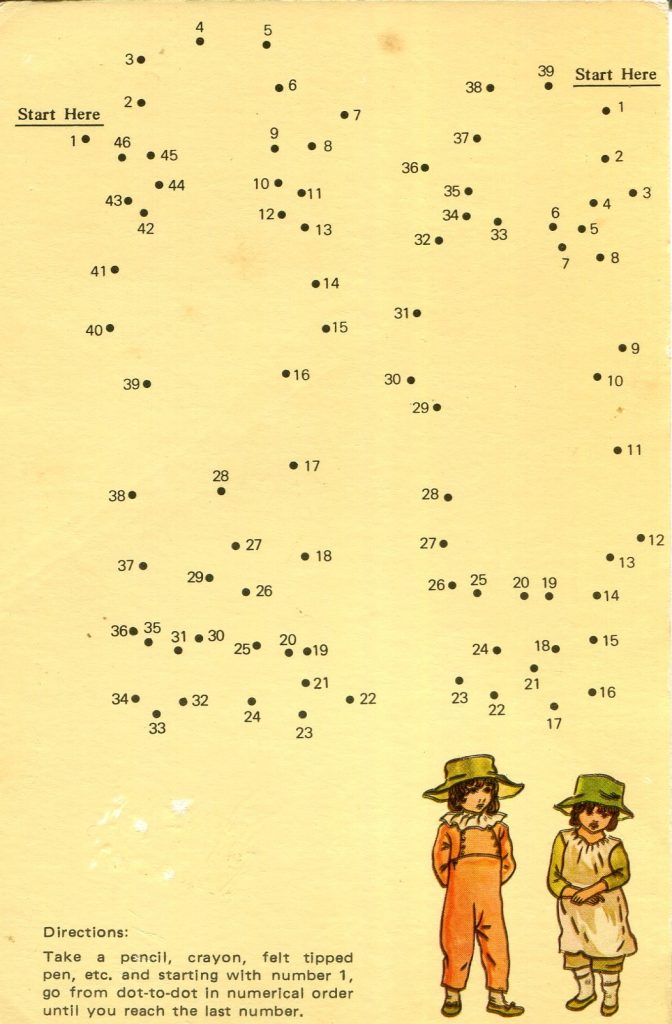Ray Hahn
Connect the Dots
Is it a bird, or a plane? Maybe a Teddy Bear? Or a dinosaur? You may have to “connect the dots” to find an answer.
We all know that children are easily amused. Shake a rattle and a baby smiles, that’s good, it means he can hear. Wiggle a stuffed toy with a red face and floppy arms and a baby goes goo, that’s good too, it means he can see.
Tickle a baby with the corner of a satin blanket and he quivers. All these things are good!
Then one day – Oh, did I mention, this is a mindset from the 1950s? – Grandmother comes for a visit, and she brings a book filled with pastimes for children. There are Pictures to Color, Fill-in the Blanks, What Comes Next, and Dots to Connect. Hopefully, grandmother remembered the obligatory box of new Crayolas or colored pencils.
Such a thoughtful gift from Grandmother would enable mother and daughter to sit at the kitchen table and catch-up on all the family gossip and other neighborhood news. Meanwhile the child is there fully entertained by the new book and crayons.
After Grandmother goes home, the game book was trashed and the crayons or pencils were dumped in a drawer. In the 1950s, you never knew when a blue pencil would be handy. That was the end of the ceaseless demands for Mother’s attention that all sounded like “Mommy, look, I made a picture.”
* * *
I have said it myself, “There is a postcard for everything.”
I seldom mention my amusement of estimating. I like to “estimate the numbers” of this or that. Often, I have tried to guess how many postcards I have seen in the nearly 35 years I have been a collector. That number may be around a million and a-half postcards, but I’m the only one counting. In all that time and counting so many, it was not until last week that I found my first Connect-the-Dots postcard. Then there were four of them.

Bear

Teddy
* * *
Just a little research led me to the origin of “dot to dot” games. An unexplained hint led to Scandinavia in the late 1940s and early ‘50s, where a graphic artist whose children were having trouble in number sequencing invented the dot-to-dot as an amusement. If the child counted properly and connected a series of numbered dots, a picture would result. It is a common problem for children under age 5 to count in proper order so the picture was the child’s reward.
The postcards presented with this article are reproductions. There is a credit on the address-side that claims the image to be a replica of the Antique Original. I tried to date the card by searching for when the felt-tipped marker was invented. Not surprising that didn’t work; the first felt tip pen was patented by Lee Newman in 1910.

Children

Bird
The cards were published in New York by a company with an address that includes a Zip Code. Consequently, the cards were printed after 1963.
So what does this matter? Print the cards and connect the dots. Get your grandchildren to help. They may even put their electronic game device down for a few minutes.
Click
HERE to find a PDF document that is printer friendly.




I wonder how many of the puzzles on the original cards were completed by the recipients. I’d guess few, if any, of the reproductions seen here were marred by the collectors who purchased them.
Well my dear friend Ray, I have a rack card to add to your count the dot collection. By the way, little Em (at 5 years of age) enjoys the challenge just as I did long ago.